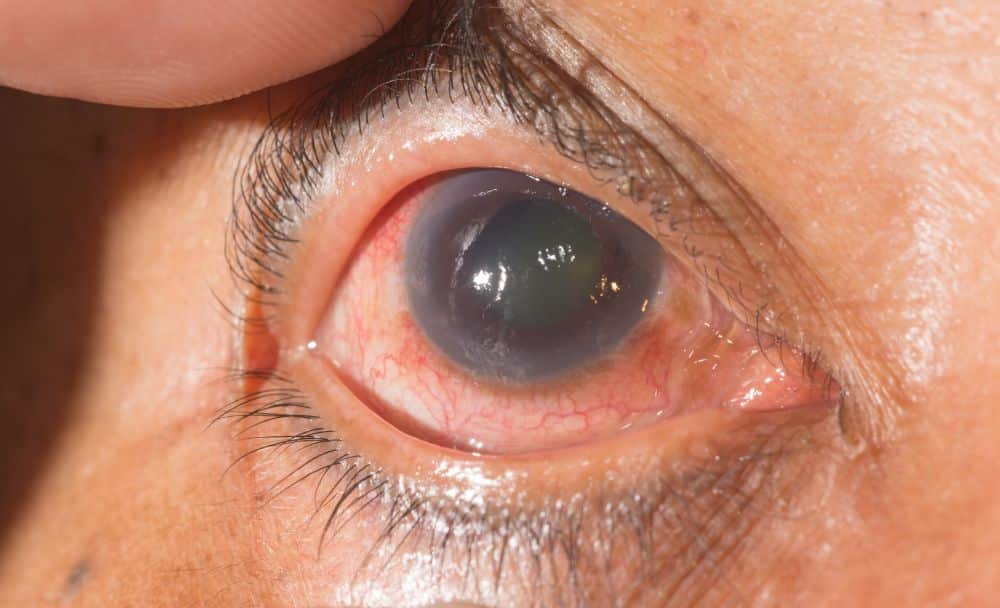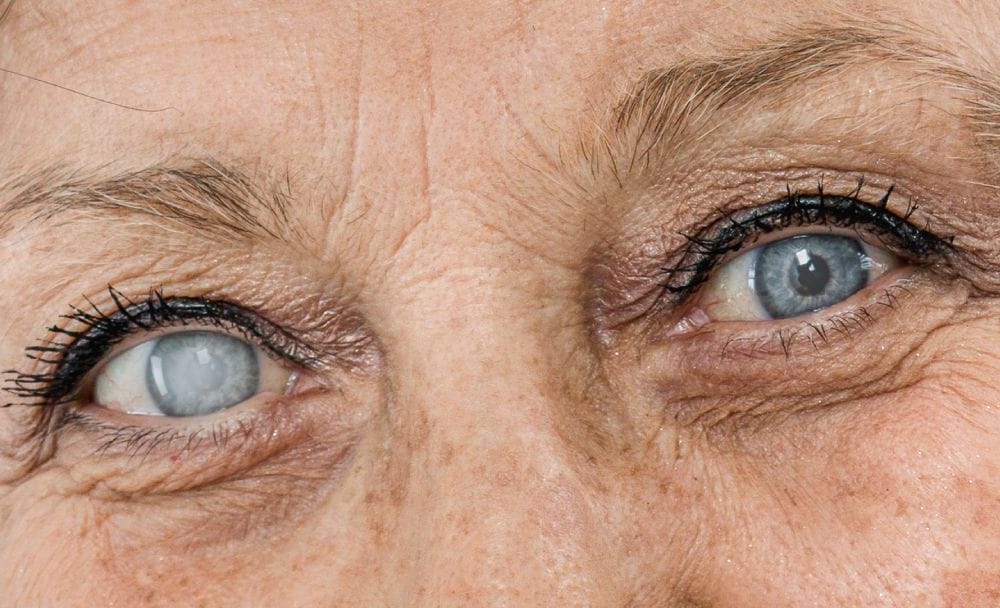Glaucoma is a multifactorial eye disease which results from progressive damage to the optic nerve, causing vision loss. Glaucoma, if neglected, can lead to total blindness. It is a complex condition that affects people of all age groups worldwide. While a patient manifesting symptoms of the disease should visit an ophthalmologist for a complete evaluation, [1] it is important to understand the glaucoma meaning, glaucoma symptoms, glaucoma causes, glaucoma types, and glaucoma treatment options. This can help with early detection, proper management, and preservation of vision. It is the second leading cause of blindness in the world [2], and this article provides a comprehensive overview of the disease and glaucoma definition, empowering individuals to take proactive steps toward eye health.
What is the Meaning of Glaucoma?
Glaucoma meaning stands for a complex eye disorder that involves an ophthalmic neurodegenerative condition and is characterized by raised intraocular pressure. The damage usually occurs due to increased intraocular pressure (IOP) within the eye. According to the glaucoma definition, the condition can progress slowly and painlessly, [5] leading to irreversible vision loss if not treated timely. [2]
What are the Symptoms of Glaucoma?
In its early stages, glaucoma may not present with noticeable symptoms. As the disease progresses, individuals may experience the following symptoms:
✓ Gradual loss of peripheral vision.
✓ Blurred or hazy vision.
✓ Intense eye pain, red eye, upset stomach, or nausea (in acute angle-closure glaucoma, a less common but more severe form of glaucoma). [4]
What are the Causes of Glaucoma?
Glaucoma reasons are varied, some of which include:
Increased Intraocular Pressure (IOP):
One of the primary glaucoma causes and risk factors for most types of glaucoma is elevated IOP. The clear fluid called aqueous humor is unable to drain properly, it can lead to increased IOP, which puts pressure on the optic nerve causing damage. [5]
Age:
Advancing age is a significant risk factor and glaucoma cause. Individuals at an advanced stage of their life are at a higher risk due to an age-related thickening of the lens. [5]
Family History:
Having a family history of glaucoma and a primary relative such as a mother, father, brother, or sister increases the risk of developing the condition and is one of the major glaucoma causes. [5]
Ethnicity:
Certain ethnic groups, including African descent and Asians, have a higher prevalence of glaucoma and are more susceptible to specific types of the disease as these groups generally have a shallower anterior chamber. [5]
Medical conditions:
People with certain medical conditions like diabetes, eye trauma, anatomical differences such as thinner corneas, high blood pressure, heart disease, history of retinal detachment, eye tumors, or inflammation, can be at a higher risk of developing glaucoma vision. [5]
What are the Types of Glaucoma?
The different glaucoma types are:
Open-Angle Glaucoma
Open-Angle Glaucoma is the most common glaucoma disease type and develops gradually over time. It occurs when the drainage canals in the eye become slowly clogged and less efficient, leading to a gradual increase in IOP. It creates a wide and open angle between the iris and cornea and usually progresses without noticeable symptoms until significant vision loss occurs. [2]
Angle-Closure Glaucoma:
Angle-closure glaucoma is a less common type but develops more rapidly. It occurs when there is a closed or narrow angle between the iris and cornea. Acute angle-closure glaucoma can cause a rapid onset of symptoms and damage that are immediately noticeable, requiring immediate medical attention. [2]
What are the Treatment Options for Glaucoma?
The treatment options for glaucoma primarily include drug treatment, laser therapy, and surgery: [3]
Topical glaucoma medication:
The first line of glaucoma cure often involves the use of glaucoma medication like OP-lowering agents such as a-adrenergic agonists like apraclonidine and brimonidine, or b-blockers like betaxolol, levobunolol, and timolol, among others. These eye drops work to lower IOP by either lowering the production of aqueous humor or the rate of uveoscleral outflow. [2]
Laser Therapy:
Laser therapy is a non-invasive glaucoma cure option for glaucoma eye disease in patients if the target intraocular pressure is not achieved by the use of drugs. Laser trabeculoplasty is a commonly used laser procedure for glaucoma. [3]
Surgical Intervention:
If glaucoma medication and laser therapy fail to control IOP or if the condition is advanced, surgical intervention may be necessary. Various surgical procedures for glaucoma eye disease, such as trabeculectomy, drainage implants, and minimally invasive glaucoma surgeries, aim to improve the outflow of fluid from the eye and reduce IOP. [3]
FAQs
- Are regular eye examinations important to prevent glaucoma eye disease?
Regular comprehensive eye examinations and glaucoma test are vital for the early detection and monitoring of glaucoma vision. These examinations may include tonometry (measuring IOP), visual field testing, optic nerve evaluation, and imaging glaucoma test.
- How can glaucoma be treated through Ayurveda?
In Ayurveda, it is believed that glaucoma is caused due to the disturbance of balance in the doshas. It says that the disturbance of Kapha dosha may lead to Glaucoma. Ayurvedic treatment approaches for glaucoma may include the following:
Diet and Lifestyle:
Ayurveda emphasizes the importance of a balanced and healthy lifestyle to maintain overall well-being. This includes following a Pitta-pacifying diet that focuses on cooling and nourishing foods. This may involve consuming fresh fruits and vegetables, whole grains, herbs like coriander and fennel, and incorporating healthy oils like ghee or coconut oil. Avoiding spicy, sour, and fried foods is often recommended. Additionally, maintaining a regular sleep schedule, managing stress through practices like yoga and meditation, and protecting the eyes from excessive strain or exposure to bright lights can also be beneficial.
Herbal Remedies:
Ayurvedic practitioners may recommend specific herbal remedies to support eye health and address imbalances. Some herbs that are traditionally used for eye disorders include
✓ Triphala- a combination of three fruits usually used as an eyewash and to reduce intraocular pressure and prevent vision loss
✓ Amla- Indian Gooseberry, which contains Vitamin C and has antioxidant properties to protect the ocular tissue, optic nerve, and retina
✓ Punarnava- Boerhavia diffusa, which has diuretic properties that help in controlling glaucoma signs and symptoms and drains the excess fluid from the eyes.
Netra Tarpana:
Netra Tarpana is an Ayurvedic eye treatment involving the application of medicated ghee or herbal oils around the eyes. It is believed to nourish and rejuvenate the eyes, promote relaxation, and reduce dryness or inflammation.
- How can you check your Motiyabindu or glaucoma in Hindi at home?
✓ Place the tips of both index fingers on your closed upper eyelids.
✓ Keeping both fingertips on the upper eyelid, apply gentle pressure upon the closed eyelid, first gently pressing on the eye with the right index finger, then with the left, and then with the right again.
✓ Repeat on the other eye
Conclusion
Glaucoma is a serious eye issue that can cause irreversible vision loss if not diagnosed and treated promptly. Understanding the meaning, recognizing the glaucoma signs and symptoms, identifying the risk factors, and seeking appropriate glaucoma cure options are crucial for managing glaucoma effectively. Regular eye examinations, adherence to prescribed glaucoma medicine, and lifestyle modifications can significantly help in preserving vision and improve the quality of life for individuals with glaucoma.
Disclaimer: This article is written from a health and wellness perspective only and is not a piece of medical advice. Kindly seek the help of a certified medical practitioner before initiating any treatment.



















